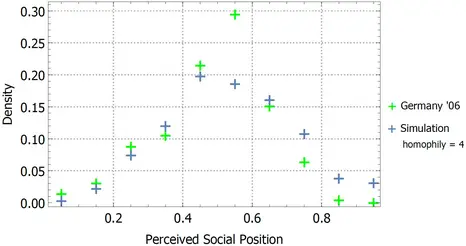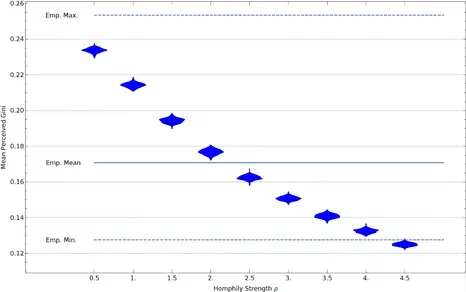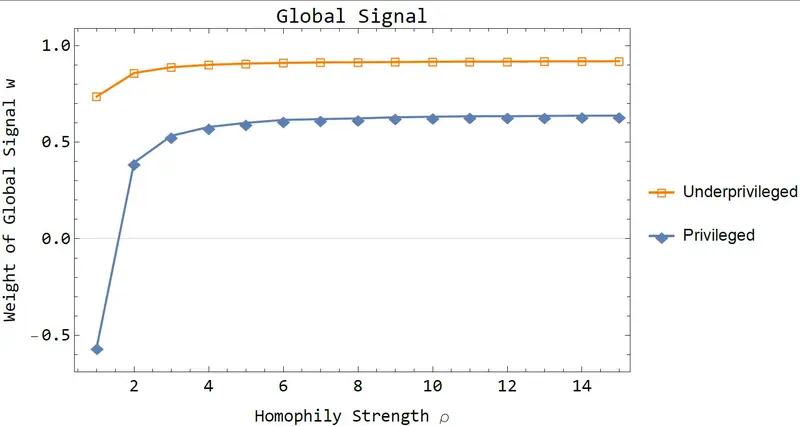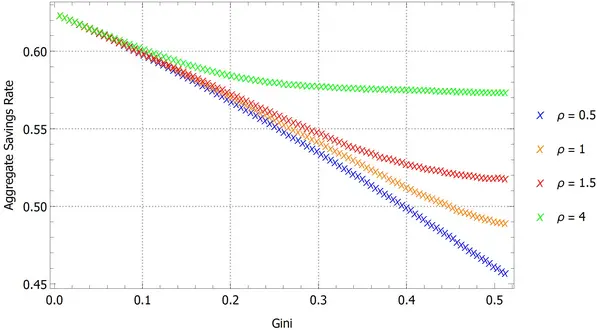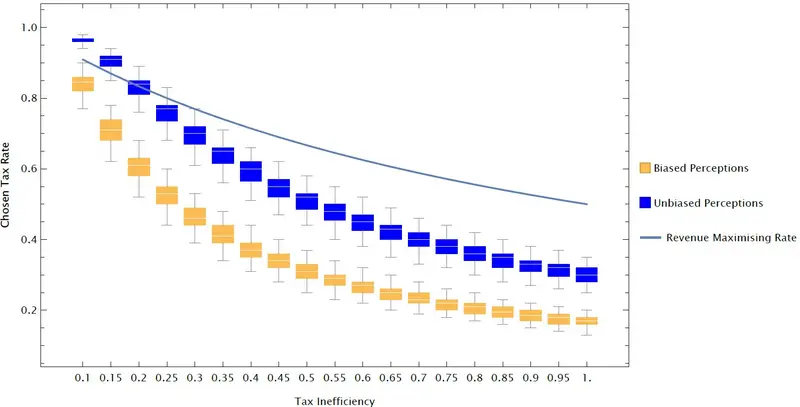Social Comparisons and Inequality Perception in Homophilic Networks
Permanent Project Team: Daniel Mayerhoffer and Jan Schulz
Across income groups and countries, the public perception of economic inequality and many other macroeconomic variables is spectacularly wrong. These misperceptions have far-reaching consequences, as it is perceived inequality, not actual inequality informing redistributive preferences and hence voting behaviour. The prevalence of this phenomenon independent of social class and welfare regime suggests the existence of a common mechanism behind public perceptions that has not yet been fully accounted for. The same holds for perceptions of gender and racial wage gaps. We identify social comparions within localised neighbourhoods as a potential mechanisms. Moreover, these social comparisons may cause individuals with lower income to consume more than they would otherwise and hence contribute to expenditure cascades.
Our project aims to reconcile these phenomena by offering a mechanism of homophilic linkage based on income. This homophily means that individuals retrieve information from a limited sample which is biased towards less inequality.
Method
The proposed theory of inequality perception bases on a random geometric graph type network. Individuals form this network by a weighted draw of link neighbours whereby the weights decrease in the income difference between drawer and potential drawee. We analytically evaluate this network and also simulate it in an agent-based model to closely track the mechanisms at work.
You can try out the baseline model of general inequality perceptions here.
Jan Schulz, Daniel Mayerhoffer and Anna Gebhard (OVGU Magdeburg)
This paper introduces and analyses the basic mechanism of homophilic linkage and the resulting random geometric graph type network as well as its implications for general perceptions of societal inequality. The generating mechanism can simultaneously replicate all stylised facts that the literature has identified on how inequality perceptions respond to actual inequality and how biases vary systematically along the income distribution. The mechanism also produces social networks that exhibit salient features of real-world networks; namely, they cannot be statistically distinguished from small-world networks, testifying to the robustness of our approach. Our results, therefore, suggest that homophilic segregation is a promising candidate to explain inequality perceptions with strong implications for theories of consumption and voting behaviour.
Schulz, J., Mayerhoffer, D.M. and Gebhard, A. A network-based explanation of inequality perceptions. Social Networks, 70 (2022), 306-324. https://doi.org/10.1016/j.socnet.2022.02.007.
Click here to access the working paper.
Daniel Mayerhoffer and Jan Schulz
We extend our model to incorporate individuals from an underprivileged and a privileged group in order to study the perception of wage gaps. This extension shows that the combination of homophilic graph formation and estimation based on locally limited knowledge can replicate both the underestimation of the gender or racial wage gap that empirical studies find and also the well-documented fact that the underprivileged perceive the wage gap to be higher on average and with less bias. In contrast to this qualitative replication, we also demonstrate that the effect of homophilic graph formation is quantitatively too strong for a recent Israeli sample on perceived gender wage gaps. We propose a simple remedy, where agents estimate using a composite signal based on local and global information. Our calibration suggests that women place much more weight on the (correct) global signal than men, in line with the intuition that people who are adversely affected by a wage gap are more interested in global information about the issue. Our findings thus suggest that (educational) interventions about the global state of gender equality are much more likely to succeed than information treatments about inequality and that these interventions should target the privileged.
Mayerhoffer, D.M. and Schulz, J. Perception and privilege. Applied Network Science 7, 32 (2022). https://doi.org/10.1007/s41109-022-00467-x
Mayerhoffer, D.M. and Schulz, J. (2022). Marginalisation and Misperception: Perceiving Gender and Racial Wage Gaps in Ego Networks. In: Benito et al. (eds.). Complex Networks & Their Applications X. Springer. Find the paper here. [ https://www.springerprofessional.de/en/marginalisation-and-misperception-perceiving-gender-and-racial-w/19984106 ]
Jan Schulz and Daniel Mayerhoffer
The nexus between debt and inequality has attracted considerable scholarly attention in the wake of the global financial crisis. One prominent candidate to explain the striking co-evolution of income inequality and private debt in this period has been the theory of upward-looking consumption externalities leading to expenditure cascades. Building on income-based homophily, we propose a parsimonious model of upward-looking consumption at the micro level mediated by perception networks with empirically plausible topologies. This allows us to make sense of the ambiguous empirical literature on the relevance of this channel. Up to our knowledge, our approach is the first to make the reference group to which conspicuous consumption relates explicit. Our model, based purely on current income, replicates the major stylised facts regarding micro consumption behaviour and is thus observationally equivalent to the workhorse permanent income hypothesis, without facing its dual problem of `excess smoothness' and `excess sensitivity'. We also demonstrate that the network topology and segregation have a significant effect on consumption patterns which has so far been neglected.
Click here to access the working paper.
Jan Schulz and Daniel Mayerhoffer
We augment a conventional Downsian model of voting for redistribution by a behavioural component in the form of an agent-based network model. The model is based on majority voting about a uniform tax rate and lump-sum redistri- bution. It also features a Laffer curve, i.e., the tax base decreasing in the tax rate with a constant elasticity of taxable income with respect to the net-of-tax rate that can be derived from utility maximisation for agents with iso-elastic utility functions (Bastani and Lundberg, 2017).
In the model, agents form beliefs about the average taxable income, which is directly related to the expected amount of redistribution from a given linear tax rate and lump-sum redistribution. They assess the average societal income based on a global signal about the mean income but also on local information from their ego network, i.e., social sample within their close contacts. The model thus nests the standard Downsian model if the weight on the global signal approaches unity.
The social sample becomes more relevant and beliefs more biased the farther the deviation is from this benchmark since social samples are skewed (but processed correctly). Such skewness is follows from the network-formation procedure.This effect leads poorer people to believe that redistribution is less effective and that they will not profit as much from it as they actually do, inducing them to vote against their rational interests.
We derive three policy conclusions:
- Network segregation according to income and induced by homophily tends to reduce the amount of redistribution. Thus, segregation is not only a problem in itself but makes it harder for voters to follow their interests.
- Global information unambiguously reduces bias and consequently tends to increase redistribution.
- The apparently paradoxical voting behaviour of the lower income strata is not necessarily the result of cognitive failures of information processing but rather the result of correct belief formation based on skewed samples. Consequently, informational and educational interventions about the true state of inequality and the average living standard in a society might also be an appropriate tool to fight misperceptions on the redistributive capacity of the state.

